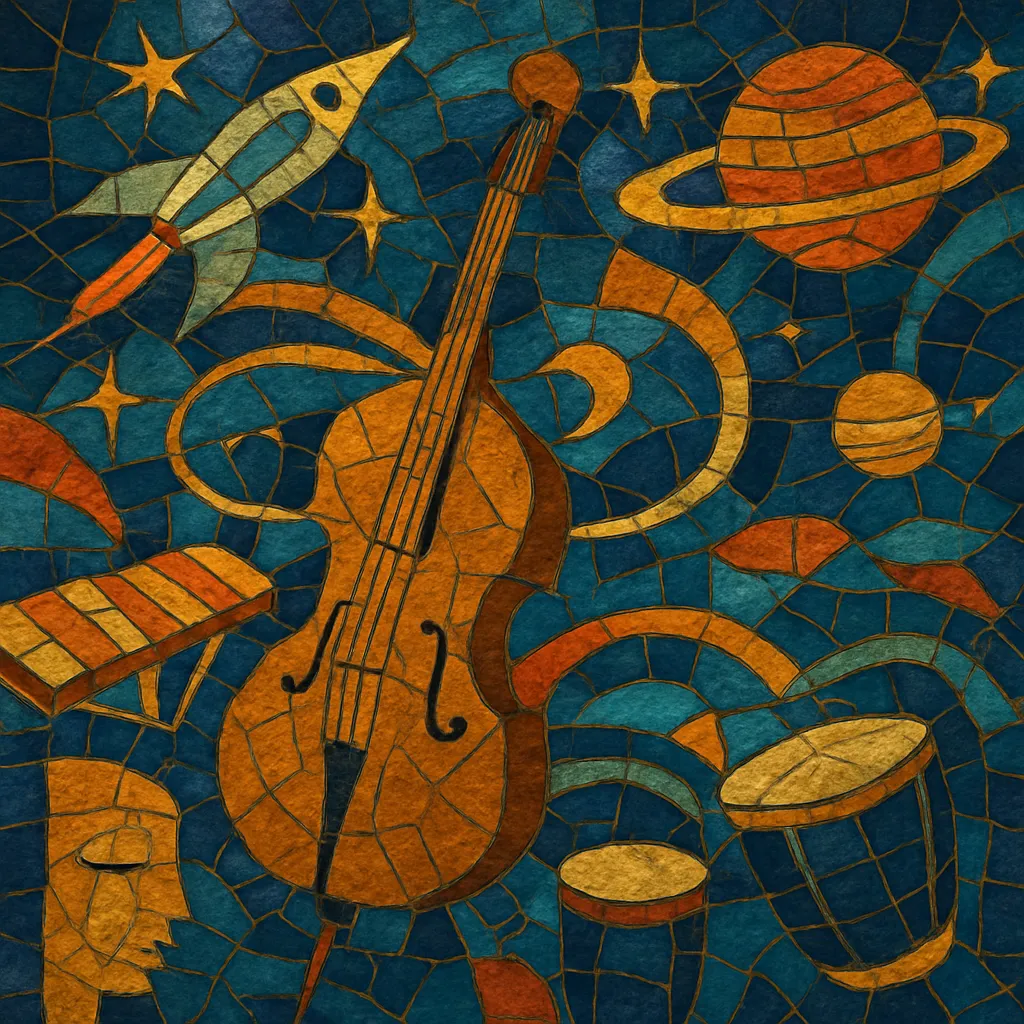
Space age pop is a mid‑century style of highly produced “hi‑fi” lounge and easy listening that embraced postwar futurism, stereo spectacle, and exotic color. It blends plush orchestras, jazz harmonies, and Latin/"exotica" percussion with novel timbres such as vibraphone, celeste, theremin, ondes Martenot, and early electronic/echo effects.
Arrangers focused on dazzling stereo staging, crisp percussion, and sparkling instrumental details meant to show off new home sound systems. Melodies are tuneful and sophisticated, harmonies are rich (9ths, 11ths, 13ths), and rhythms often draw from mambo, cha‑cha‑cha, and bossa‑tinged grooves. The mood ranges from dreamy and romantic to playful and futuristic—an aural image of the “Jet Age,” tiki bars, and optimistic science fiction.
Space age pop emerged in the United States alongside the postwar hi‑fi boom and the public’s fascination with jet travel, rockets, and modern design. Easy listening orchestras and big band veterans began to incorporate Latin percussion, shimmering mallet instruments, and novel studio effects. Early exotica albums by Les Baxter and Martin Denny set the tone, while stereo LPs (mainstreamed in 1958) encouraged arrangers to craft dramatic left/right placement and ultra‑clean recordings.
Label impresarios and arrangers such as Enoch Light (Command Records) turned stereo into a feature: albums like Persuasive Percussion showcased pinpoint imaging, vivid percussion, and lush strings. Esquivel’s mischievous orchestrations and wordless vocals, Arthur Lyman’s vibraphone‑led exotica, and light‑orchestra leaders like Percy Faith and Ray Conniff brought jazz harmony and Latin grooves into living rooms. Space‑themed LPs—Russ Garcia’s Fantastica: Music from Outer Space, Ferrante & Teicher’s sonic showpieces—embodied optimistic futurism.
As rock and the British Invasion reshaped popular taste, space age pop receded from the charts, though its arranging craft lived on in film/TV, advertising, and library music. The focus on stereo demonstration gave way to multitrack rock production, but the genre’s timbral playfulness and orchestral polish continued to influence soundtrack work.
CD reissues and compilations (e.g., Ultra‑Lounge) sparked a lounge revival. Indie and electronic scenes—shibuya‑kei, downtempo, nu jazz, and hauntology—reframed mid‑century futurism, sampling its textures and aesthetics. Today, space age pop is recognized for its arranging finesse, stereo imagination, and the way it captured an era’s optimistic vision of the future.

